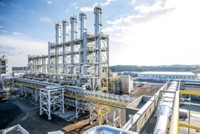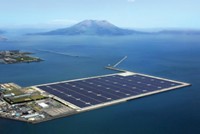Advertisement
Grab your lab coat. Let's get started
Welcome!
Welcome!
Create an account below to get 6 C&EN articles per month, receive newsletters and more - all free.
It seems this is your first time logging in online. Please enter the following information to continue.
As an ACS member you automatically get access to this site. All we need is few more details to create your reading experience.
Not you? Sign in with a different account.
Not you? Sign in with a different account.
ERROR 1
ERROR 1
ERROR 2
ERROR 2
ERROR 2
ERROR 2
ERROR 2
Password and Confirm password must match.
If you have an ACS member number, please enter it here so we can link this account to your membership. (optional)
ERROR 2
ACS values your privacy. By submitting your information, you are gaining access to C&EN and subscribing to our weekly newsletter. We use the information you provide to make your reading experience better, and we will never sell your data to third party members.
Business
Wacker Opens Polysilicon Plant
Business: New capacity comes on-line during difficult time for solar industry
by Michael McCoy
May 7, 2012
| A version of this story appeared in
Volume 90, Issue 19

Wacker Chemie has opened a $1.2 billion polysilicon facility at its Nünchritz, Germany, site. The company says the new capacity—15,000 metric tons per year—is coming on-line as demand picks up in the polysilicon industry after the poor fourth quarter in 2011.
By the end of 2012, Wacker says, the company’s total capacity for polysilicon will be around 52,000 metric tons, making it one of the world’s largest producers of the key photovoltaic cell component. The firm’s capacity will further rise to around 70,000 metric tons by 2014 with the opening of another new facility in Charleston, Tenn.
At an inauguration ceremony, Wacker CEO Rudolf Staudigl affirmed his bullishness on the solar industry despite the rocky end to 2011. Overcapacity and consolidation in the industry had a strong negative impact on the company’s business in the fourth quarter of last year, he acknowledged. In a sign of the market turmoil, the firm said $87 million of its polysilicon earnings last year came from holding on to advance payments made by customers that later decided to withdraw from the business.
Yet demand picked up “markedly” in the first few months of 2012, Staudigl said, and he cast falling polysilicon prices in a positive light. “We are very optimistic about the outlook for photovoltaics because the significant price decline for polysilicon, wafers, cells, and modules strengthens photovoltaics’ competitiveness as an energy source,” he said.
Observers are less optimistic about the sector, although they see large companies such as Wacker pulling through. In a report released earlier this year, the market analysis firm GTM Research predicted that the polysilicon industry will undergo “a major shakeout” over the next two years as the price declines of 2011 continue through 2013.
Many companies are furiously adding polysilicon capacity, despite waning demand for photovoltaics, noted Brett Prior, a GTM senior analyst. He said the resulting oversupply “has already begun to open significant gaps in production scale, and therefore cost structure, between industry leaders and an increasingly marginalized group of new entrants.”





Join the conversation
Contact the reporter
Submit a Letter to the Editor for publication
Engage with us on Twitter